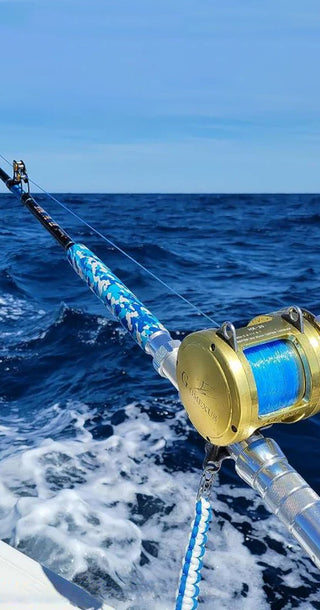Fishing for bass is very challenging at first. It all depends on your approach, the spot your fishing and your mindset. Time of day, current weather conditions, and the tide also play a significant role in trying to catch bass. How much food is in the water and in the area where you're fishing is also an important factor. They both affect fish activity levels and their drive to feed. When all the odds, out of your control, are against you, producing strike will be difficult. However, don't get discouraged. After reading this and understanding the mindset of a bass, you will be catching lunkers!
To understand where largemouth bass hang around, you have to realize what kind of fish they are and what they do. They are a predator fish, very aggressive and territorial. Big bass and little bass do not hang around each other. Let's say you're catching a lot of small bass. The bigger fish will be nowhere around because big bass eat little ones. Big fish don't want to use a lot of energy just like any predator. You have to adopt the aggressive mindset of a predator to find them. But you can assume that aggressive fish will eat anything in sight, and they do. If you bring anything near a largemouth bass's mouth, they WILL eat it. You have to think like a predator. Keeping it simple and thinking on your feet. Change strategies quickly when you're not getting any strikes.
First, identify your surroundings, find landmarks that are man-made or natural, look for ledges and cover that can hide large fish. Many common areas that bass like to hang around are submerged trees or stumps, branches hanging over and into the water, ledges, docks, and other items that provide cover and shelter for fish. Keep an eye out for vegetation, lily pads, moss underneath the water, moss growing thick on the surface or leaves that have fallen off of trees and are floating over the water. The main thing to look for when targeting largemouth bass is shelter. The shelter gives predatory fish cover to ambush bait. Big fish, in general, LOVE ledges. Big fish hang around these ledges because small bait fish like to swim and eat food around them. You want to look for are an area of water that is shallow and suddenly drops off into deep water. The drop off should be an almost 90-degree drop-off into deep water. Ledges that have a gradual drop off don't produce as much big fish. You will also want to look for points that stick out into the water from the bank. Points usually house big largemouth bass, and you will have amazing results fishing these areas of water. Also, be on the lookout for flowing water from man-made or natural dams and levees. The flowing of water brings nutrients and food that small fish like to eat, bringing the bigger fish around!
Largemouth bass use mainly their eyesight, so always look around the shallows of the location you'll be fishing. If there are a lot of people fishing, then you have to see what kind of baitfish are in the water that will attract the bigger fish. So if you see a lot of minnows in shallow water, you can assume that the largemouth bass will be aggressive. So you will want to find areas where these minnows are always swimming and heavily fish those areas. Again, look for the ledges, cover, and bait and you’ll hook up to your personal best bass.
You can’t go wrong when you approach fishing strategically, thinking like your targeted species. Fishermen swear by a million different techniques, but all in all, if you use your head, common sense and think like a fish, you'll be successful catching lots of bass!
To understand where largemouth bass hang around, you have to realize what kind of fish they are and what they do. They are a predator fish, very aggressive and territorial. Big bass and little bass do not hang around each other. Let's say you're catching a lot of small bass. The bigger fish will be nowhere around because big bass eat little ones. Big fish don't want to use a lot of energy just like any predator. You have to adopt the aggressive mindset of a predator to find them. But you can assume that aggressive fish will eat anything in sight, and they do. If you bring anything near a largemouth bass's mouth, they WILL eat it. You have to think like a predator. Keeping it simple and thinking on your feet. Change strategies quickly when you're not getting any strikes.
First, identify your surroundings, find landmarks that are man-made or natural, look for ledges and cover that can hide large fish. Many common areas that bass like to hang around are submerged trees or stumps, branches hanging over and into the water, ledges, docks, and other items that provide cover and shelter for fish. Keep an eye out for vegetation, lily pads, moss underneath the water, moss growing thick on the surface or leaves that have fallen off of trees and are floating over the water. The main thing to look for when targeting largemouth bass is shelter. The shelter gives predatory fish cover to ambush bait. Big fish, in general, LOVE ledges. Big fish hang around these ledges because small bait fish like to swim and eat food around them. You want to look for are an area of water that is shallow and suddenly drops off into deep water. The drop off should be an almost 90-degree drop-off into deep water. Ledges that have a gradual drop off don't produce as much big fish. You will also want to look for points that stick out into the water from the bank. Points usually house big largemouth bass, and you will have amazing results fishing these areas of water. Also, be on the lookout for flowing water from man-made or natural dams and levees. The flowing of water brings nutrients and food that small fish like to eat, bringing the bigger fish around!
Largemouth bass use mainly their eyesight, so always look around the shallows of the location you'll be fishing. If there are a lot of people fishing, then you have to see what kind of baitfish are in the water that will attract the bigger fish. So if you see a lot of minnows in shallow water, you can assume that the largemouth bass will be aggressive. So you will want to find areas where these minnows are always swimming and heavily fish those areas. Again, look for the ledges, cover, and bait and you’ll hook up to your personal best bass.
You can’t go wrong when you approach fishing strategically, thinking like your targeted species. Fishermen swear by a million different techniques, but all in all, if you use your head, common sense and think like a fish, you'll be successful catching lots of bass!




Willow sandidge
This was helpful and easy to understand. I love fishing for large mouth bass. I have always had luck with fishing slow with soft baits. It’s hard to be patient sometimes, works great and gets the lunkers! I like your website. It’s very well designed. Very educational. Thanks goes to Monster Mike too.